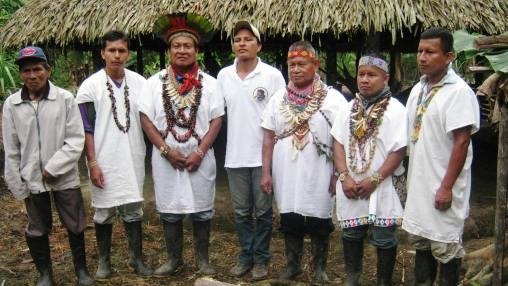The river Putumayo, broad and red, makes its way through the deep green forests. Many living species find their home there.
The indigenous people in the Putumayo department know many of them, on the river side or in the mountains. They consider their natural environment an essential part of their development, their well – being and culture.
But the natural areas are being affected by climate change, they say, – species are disappearing and there are more floods and droughts, endangering their survival, changing their living conditions.
Pablo Jamioy, from the Camëntsá indigenous people and an entrepreneur who sells indigenous handcraft, together with others, decided their people needed a way of communicating with the government and other institutions.
They needed to show how rich the nature in their region was and what it meant to indigenous people, but also what problems it was facing, and how they were affected. They wanted to give an alternative response to what had been done so far.
“Without territory, indigenous people can't exist”
Without their territory, indigenous people cannot exist, he explains. They wanted to propose a fair and adequate management of the territory, taking into account the traditional management ways of the indigenous people, making sure they could follow their traditions and rituals, hunt, fish, plant crops and drink clean water.
They applied to a competition of the Development Marketplace, a World Bank competitive grant program, that was seeking innovative projects on the adaptation on climate change at that moment – and they won a grant in 2009.
They have since then produced five environment management plans that address the social and economic needs of five indigenous groups in the Putumayo region. Now, the communities have solid tools that can help them to adapt themselves and act upon environmental changes.


